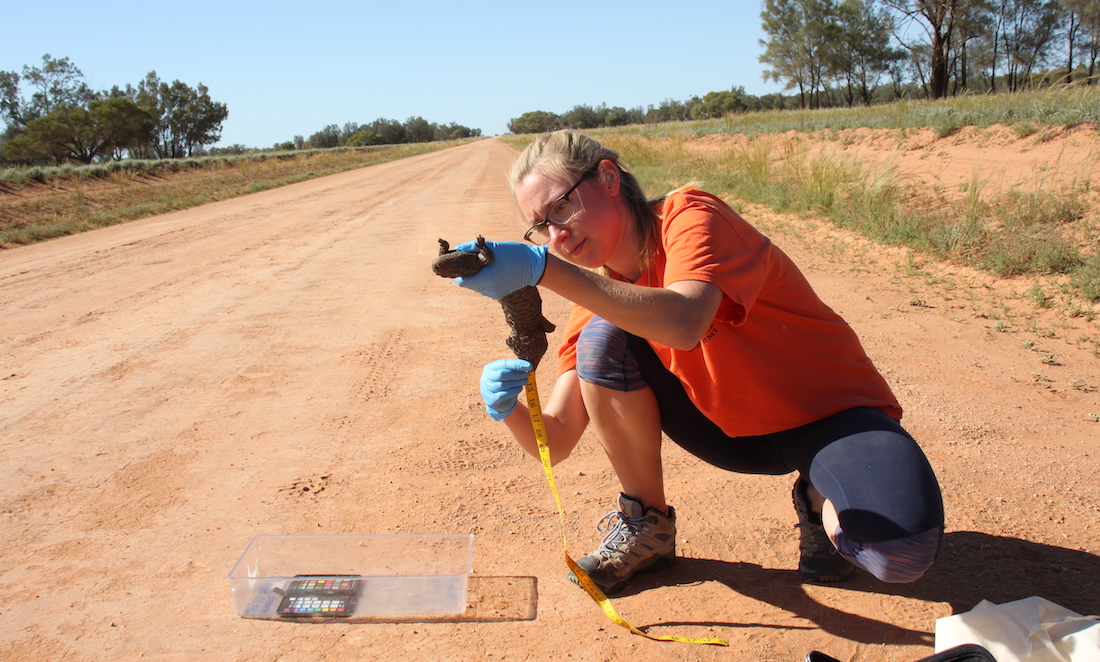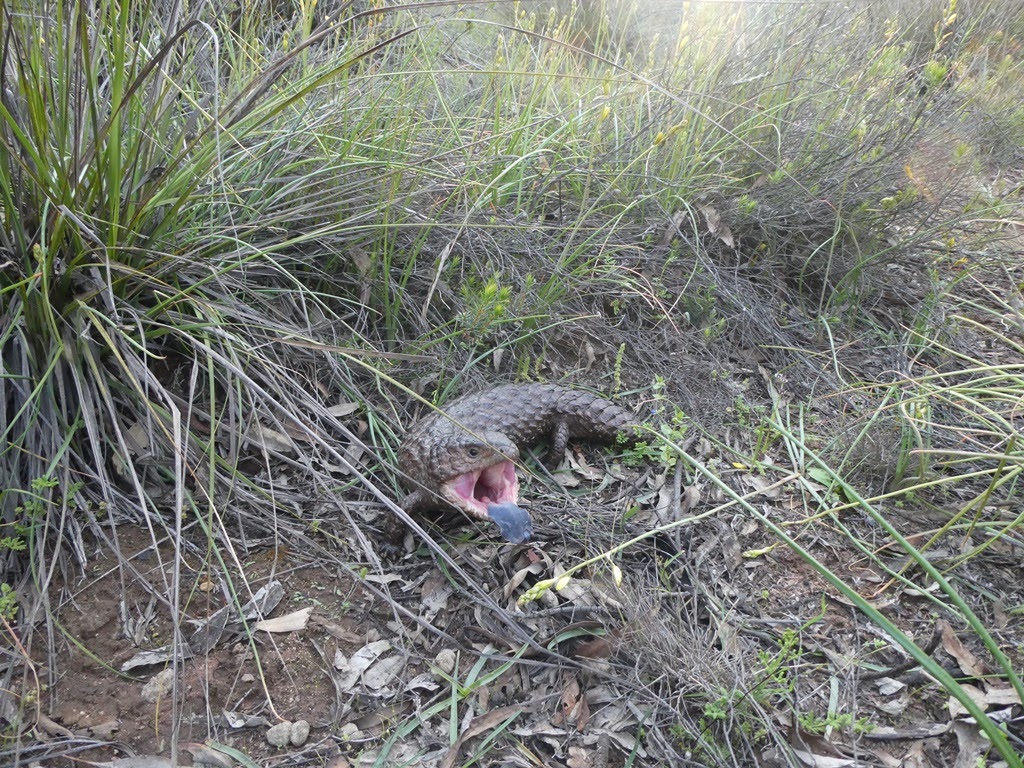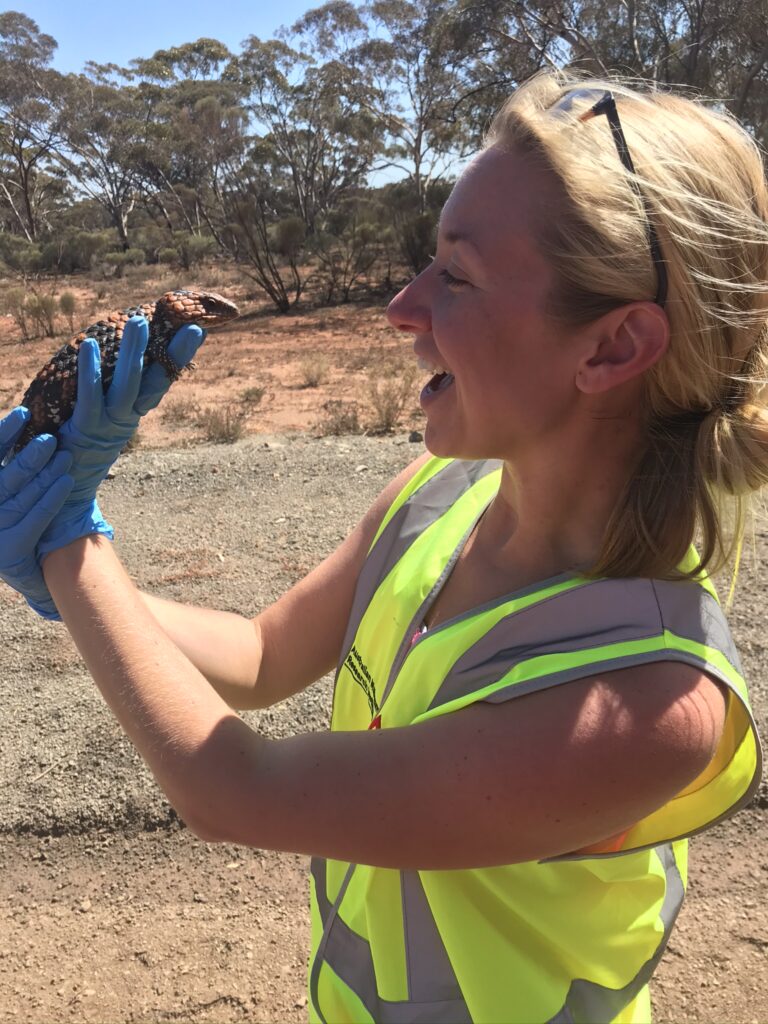Scientists have used bobtail lizards to create the world’s first database of ‘odours’ from a living animal.
The researchers collected bobtails – or shinglebacks as they’re known in the eastern states – from around Australia, including Western Australia.
They then analysed the volatile organic compounds (aka smelly chemicals) released by the lizards.
It’s hoped the technology can be used to detect bobtails illegally smuggled in luggage and other cargo.
Wildlife forensics expert Dr Amber Brown led the research as a PhD student at the University of Technology Sydney and the Australian Museum Research Institute.
She says the results should put wannabe wildlife traffickers on notice.
“I found that 44 compounds were shared across all habitat types and captive shinglebacks,” says Amber.
“So those are good targets for detection.”
THE ROMANTIC LIZARDS
Since bobtail lizards are commonly found sunbaking in our gardens, most Aussies probably wouldn’t expect the shy creatures to be one of the most commonly poached Australian animals.
One lizard can fetch tens of thousands of dollars on the global black market.
According to Amber, many are taken from the wild and illegally exported as exotic pets.
“This is particularly challenging for the shingleback because they are monogamous,” she says.
“They’re also known as ‘the romantic lizard’. So if their mate is shipped off, they’re not likely to find another.”
“They also give birth in sets of twins, so their reproductive rate is not great.”
CATCHING A SCENT
Amber moved to Australia from the United States for her PhD – dreaming of becoming a crocodile hunter like Steve Irwin.
“I’ve always loved Australian wildlife, specifically reptiles,” she says.
“To have the opportunity to do my PhD in this field, working with those animals and having positive outcomes was a dream come true.”
Amber’s research was built on the principles of her supervisor’s work which uses odours to detect human remains.
Theoretically, Amber knew that she could use two-dimensional gas chromatography coupled with time-of-flight mass spectrometry instruments.

But just because something is possible doesn’t mean it’s easy. It took Amber a full year to adapt the method for bobtails.
“I had to create the dimensions for the sampling container,” she says.
“I had to see how I could decontaminate the sampling container without harming the animals, removing all the [volatile organic compounds] from the sampling container without using toxic chemicals.
“I then had to see how much time I had to have animals stay in the box in order for it to produce its odours – how long I collected them for without stressing out the animal.
“What material was best to collect their odours as well as how to best adapt the instrument.”
HOME SWEET HOME
According to Amber, bobtails can release different odours depending on their size, age, gender, diet, genetics and whether they have ticks.
She says her research has also linked certain odours to individual regions.
It means scientists may be able to identify where confiscated lizards have come from and return them to their home environment.
While the technology isn’t ready to be used by border security just yet, Amber says science is always developing better detection methods.
“There’s a lot of potential,” says Amber.
“It’s not a perfect method yet, but I think we’re well on our way, which is exciting.”











